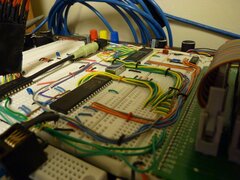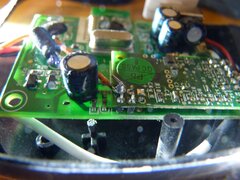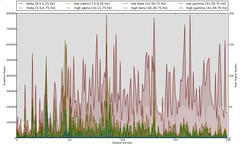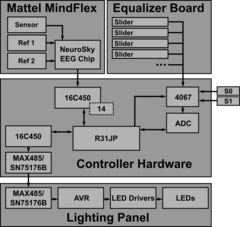CEREBRO is a system that provides rudimentary translation of signals captured from a consumer EEG device into a lighting display output. As my final project for 6.115 (MIT’s “microcomputer” class), this project required use of an 8051-based class labkit, with code written in assembly.
EEG
EEG sensor data was obtained by modifying the headband of a Mattel Mindflex toy to output data from the NeuroSky TGAM1 module within it.
Driving the Display
CEREBRO’s 8051 is responsible for computing a lighting display pattern in realtime and driving a light fixture similar in design to that of ACRIS.
A few simple signal processing algorithms were built to showcase CEREBRO. An analog equalizer board could be used to adjust the algorithm behavior.
Design Considerations
As a large assembly project, elegant infrastructure and coding practices were critical to successful implementation and testing. I established a number of conventions that allowed for modularization of the code. Careful documentation of interface definition and accounting of register usage were crucial. CEREBRO’s modules enabled a variety of functionality, such as:
- a math library for converting HSV space into RGB,
- 3 signal processing algorithms for turning an EEG stream into a lighting pattern,
- a routine for cross-fading between color values,
- a state machine for receiving and decoding EEG data from the NeuroSky sensor,
- a driver for smoothly displaying the computed lighting pattern on the light fixture
- a workloop for retrieving analog slider values from a multiplexed equalizer board, and
- a simple serial console for printing of debug output





